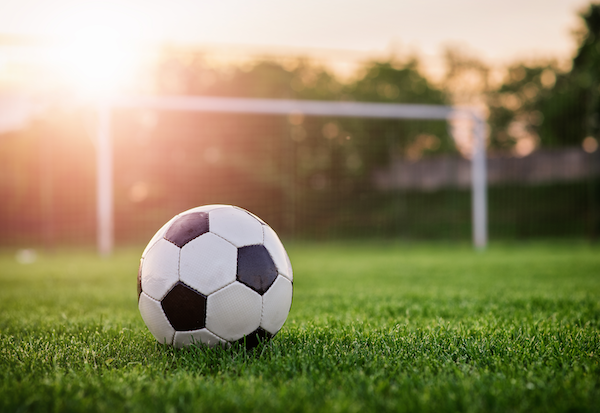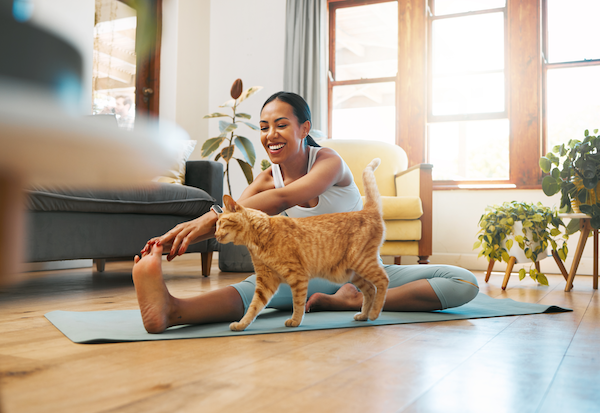
Yoga has become increasingly popular in recent years, with people of all ages and backgrounds taking up the practice. From improving flexibility and strength to reducing stress and anxiety, yoga offers numerous benefits for both the mind and body. However, despite its popularity, many people still have questions, particularly about how to get started. In this guide, we’ll cover everything you need to know, and how to start your own practice.
Table of Contents
The History of Yoga
Yoga has a rich and diverse history that spans thousands of years. It originated in ancient India as a way to connect the mind, body, and spirit through physical postures, breathing techniques, and meditation. The earliest known text to mention yoga is the Rigveda, a collection of sacred hymns dating back to 1500 BCE. Over time, yoga evolved into many different forms, each with its own unique philosophy and approach.
One of the most influential figures in the history of yoga was the sage Patanjali, who wrote the Yoga Sutras around 400 BCE. The Yoga Sutras is a collection of 196 aphorisms that outline the eight limbs of yoga, including ethical principles, physical postures, breath control, and meditation. The teachings of Patanjali have had a profound impact on the development of modern yoga, and many yoga styles today are based on his principles.
Benefits of Practicing Yoga
The benefits of practicing yoga are numerous and well-documented. From improved physical health to increased mental clarity and emotional well-being, yoga has something to offer everyone. One of the most obvious benefits of yoga is increased flexibility and strength. Physical poses, or asanas, can help stretch and strengthen muscles, improve posture, and increase overall body awareness.
In addition to its physical benefits, yoga is also known for its ability to reduce stress and anxiety. The deep breathing techniques and meditation practices used in yoga can help calm the mind and promote relaxation. Studies have also shown that regular yoga practice can lower blood pressure, reduce inflammation, and improve immune function.
Another benefit of yoga is its ability to improve mental clarity and emotional well-being. The mindfulness and awareness practices used in yoga can help cultivate a sense of inner peace and happiness. Regular yoga practice has been shown to improve mood, reduce symptoms of depression and anxiety, and increase overall feelings of well-being.
Types of Yoga
There are many different types of yoga (including aqua yoga!), each with its own unique philosophy and approach. Some of the most popular styles of yoga include Hatha, Vinyasa, Ashtanga, Bikram, and Yin. Hatha yoga is a gentle, slow-paced style that focuses on basic postures and breath control. Vinyasa yoga is a more dynamic, flowing style that emphasizes movement and breath coordination.
Ashtanga yoga is a more rigorous, athletic style that follows a specific sequence of postures. Bikram yoga, also known as hot yoga, is practiced in a room heated to 105 degrees Fahrenheit and involves a set sequence of 26 poses. Yin yoga is a slower, more meditative style that focuses on holding poses for longer periods of time to increase flexibility and release tension.
What to Expect in a Yoga Class
If you’re new to yoga, attending your first class can be a bit intimidating. However, most yoga classes follow a similar format and include a combination of physical postures, breathing techniques, and meditation practices. When you arrive at the studio, you’ll typically be asked to remove your shoes and socks and sign in at the front desk.
Once you’ve found a spot in the studio, the teacher will usually lead the class through a brief centering practice, which may involve some deep breathing or meditation. The class will then move through a series of physical postures, or asanas, which may be held for several breaths each. The teacher will often provide modifications and adjustments to help students find the right level of intensity.
Towards the end of class, there will usually be a period of relaxation, known as savasana, where students lie on their backs and focus on their breath. The class will then end with a closing meditation or chant. Overall, the atmosphere in a yoga class is usually calm and supportive, with a focus on mindfulness and self-awareness.
Basic Yoga Poses for Beginners
If you’re new to yoga, it can be helpful to start with some basic postures to build strength and flexibility. Some of the most common beginner poses include downward-facing dog, warrior I, and child’s pose. Downward-facing dog is a great pose for stretching the hamstrings, calves, and spine. Warrior 1 is a standing pose that strengthens the legs and opens the hips. The Child’s pose is a gentle resting pose that can help release tension in the back and neck.
Other beginner poses include mountain pose, tree pose, and cobra pose. The Mountain pose is a simple standing posture that can help improve posture and balance. The Tree pose is a balancing posture that strengthens the legs and improves focus. Cobra pose is a gentle backbend that can help stretch the spine and open the chest.
How to Build a Daily Yoga Practice
Building a daily practice can be a great way to experience the benefits of yoga on a deeper level. However, starting a daily practice can be challenging, especially if you’re new to it. One of the best ways to start a daily practice is to set aside a specific time each day for yoga. This could be first thing in the morning, during your lunch break, or in the evening before bed.
It’s also important to start with a manageable amount of time and build up gradually. Even just 10-15 minutes of yoga each day can be beneficial. There are also many online resources and apps that offer guided yoga practices that you can do at home. As you become more comfortable with your practice, you can start to explore different styles and postures to keep things interesting.
Yoga Retreats and Workshops
If you’re looking to deepen your practice, attending a retreat or workshop can be a great way to do so. Yoga retreats offer an immersive experience where you can focus on your practice in a supportive and peaceful environment. Many retreats also offer workshops and classes on specific aspects of yoga, such as meditation, philosophy, or anatomy.
Workshops are also a great way to deepen your knowledge and experience of yoga. They often focus on a specific aspect of the practice, such as arm balances, inversions, or pranayama (breathing techniques). Workshops are typically led by experienced teachers and offer a more focused and intensive learning experience than regular classes.
Yoga Equipment and Accessories
While you don’t need a lot of equipment to practice yoga, having the right gear can make your practice more comfortable and enjoyable. One of the most important pieces of equipment is a yoga mat. A good yoga mat will provide cushioning and grip to help prevent slipping during poses. Other useful accessories include yoga blocks, which can be used to modify poses or provide support, and straps, which can help with flexibility and alignment.
Yoga clothing should be comfortable and breathable, allowing for a full range of motion. Many yoga clothing brands offer specialized clothing designed specifically for yoga, including leggings, tops, and shorts. It’s also important to stay hydrated during your practice, so be sure to bring a water bottle with you to class.
Common Misconceptions About Yoga
There are many misconceptions about yoga, which can make it difficult for some people to get started. One of the most common misconceptions is that yoga is only for people who are already flexible. In reality, yoga is a practice that can be adapted to any level of flexibility or fitness, even for Seniors or children.
Another common misconception is that yoga is a religion or spiritual practice. While yoga has its roots in ancient spiritual traditions, it is not a religion and can be practiced by people of any faith or belief system.
Frequently Asked Questions About Yoga
Q: Do I need to be flexible to do yoga?
A: No! Yoga is a practice that can be adapted to any level of flexibility or fitness. With regular practice, you will gradually become more flexible over time.
Q: What should I wear to a yoga class?
A: Wear comfortable, breathable clothing that allows for a full range of motion. Many yoga clothing brands offer specialized clothing designed specifically for yoga.
Q: How often should I practice?
A: Ideally, you should aim to practice at least 2-3 times per week. However, even just a few minutes of yoga each day can be beneficial.
Conclusion
Yoga is a practice that has something to offer everyone, regardless of age fitness level, or background. By understanding the history and benefits of yoga, and by taking the time to build a regular practice, you can experience the many physical, mental, and emotional benefits of this ancient practice. Whether you attend classes at a local studio, practice at home, or attend a retreat, yoga has the power to transform your life in countless ways.



